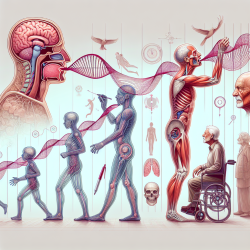Understanding the Built Environment's Impact on Mobility in Older Adults
In the ever-evolving field of speech-language pathology, practitioners must stay informed about the myriad factors that influence client outcomes. One such factor, often overlooked, is the built environment's impact on mobility, especially in older adults. The research article, The Urban Built Environment and Mobility in Older Adults: A Comprehensive Review, provides valuable insights that can enhance our understanding and practice.
Key Findings from the Research
The study highlights several critical aspects of the built environment that affect mobility in older adults:
- Street Connectivity: Higher street connectivity leads to shorter pedestrian distances, which can enhance mobility.
- Safety Measures: Street and traffic conditions, including safety measures, play a significant role in promoting walking and reducing disability.
- Proximity to Destinations: Access to retail establishments, parks, and green spaces encourages physical activity and improves mobility.
These findings underscore the importance of considering environmental factors when assessing and planning interventions for older adults.
Implications for Practitioners
As practitioners, integrating these insights into our practice can lead to better outcomes for our clients. Here are some actionable steps:
- Conduct Environmental Assessments: Evaluate the built environment around your clients' homes and identify potential barriers or facilitators to mobility.
- Advocate for Environmental Changes: Work with community planners and policymakers to promote changes that enhance street connectivity and safety.
- Incorporate Mobility Goals: Set specific mobility goals that consider the client's environment, such as increasing walking distances or frequency.
Encouraging Further Research
The research also highlights gaps in the existing literature, such as the need for longitudinal studies and the exploration of subpopulations among older adults. Practitioners are encouraged to engage in or support further research to deepen our understanding of these complex interactions.
By staying informed and proactive, we can contribute to creating environments that support healthy aging and improve quality of life for older adults.
To read the original research paper, please follow this link: The Urban Built Environment and Mobility in Older Adults: A Comprehensive Review.










